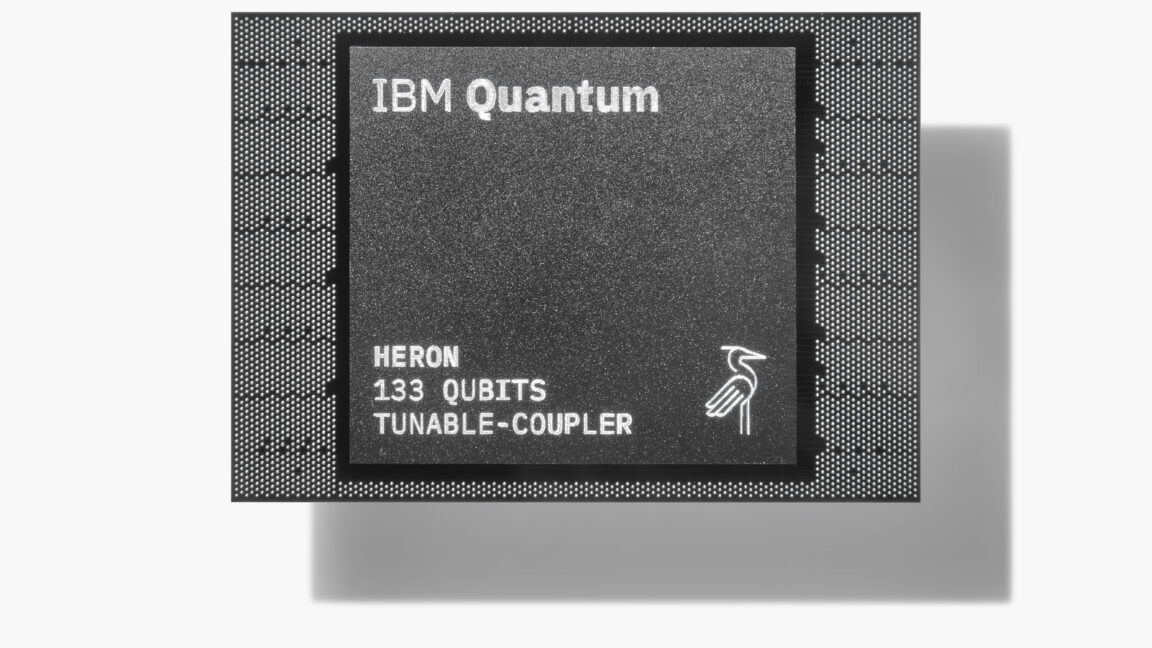IBM Boosts Quantum Computing Capabilities with Incremental Improvements
IBM has announced significant advancements in its quantum computing technology, enhancing the ability to conduct complex calculations on its quantum hardware. While error-corrected quantum computing remains a future goal, IBM is optimistic about performing useful calculations in the interim.
Key Developments in Quantum Hardware
The announcements made by IBM are not groundbreaking individually, but collectively they represent substantial improvements across both hardware and software. These enhancements lead to more efficient and less error-prone operations, allowing for increasingly complex calculations. The company’s latest updates focus on the second version of its Heron processor, which features 133 qubits. This development is particularly noteworthy as it exceeds the capabilities of classical computer simulations, provided it operates with sufficiently low error rates.
Jay Gambetta, IBM’s VP, explained that the focus of the Heron Revision 2 was to eliminate TLS (two-level system) errors, which can disrupt qubit coherence. By adjusting the operational frequencies of the qubits during calibration, IBM aims to mitigate these issues. This adjustment helps maintain the quantum state necessary for calculations, improving overall performance.
Software Enhancements for Greater Efficiency
In addition to hardware advancements, IBM has revamped the software controlling the quantum systems. By learning from user experiences and optimizing the system for larger circuits, IBM has significantly reduced operation times. Tasks that previously took 122 hours to complete can now be performed in just a couple of hours, enhancing user experience and reducing the likelihood of errors during calculations.
This efficiency is crucial as users pay for time on the quantum hardware, and shorter computation times can lead to fewer random errors.
Addressing Errors Through Mitigation Techniques
While improvements have been made, errors are still a concern during significant calculations. IBM is focusing on error mitigation techniques, which involve amplifying and measuring processor noise. This data helps create a function that approximates the processor’s output without noise, although the computational complexity of this approach increases with the number of qubits.
IBM has optimized its error mitigation processes by incorporating algorithmic improvements and utilizing GPU processing. This allows for the application of error mitigation techniques to larger quantum circuits, making it more feasible to conduct meaningful experiments.
Practical Applications and Future Outlook
IBM has successfully modeled a simple quantum system known as the Ising model, performing 5,000 individual quantum operations called gates. The results have shown promise, enabling researchers to simulate the electronic structures of simple chemical compounds, such as iron-sulfur complexes. This development marks a significant step toward establishing quantum computing as a viable scientific tool.
However, Gambetta cautions that this progress does not imply that quantum computers can consistently outperform classical systems. The quest to determine when quantum methods will surpass classical techniques remains a complex scientific challenge. Gambetta emphasizes the necessity for collaboration between algorithmic researchers and domain experts to navigate this iterative process.
Conclusion
IBM’s recent advancements in quantum computing reflect a commitment to enhancing performance and usability in the field. While the journey toward fully error-corrected quantum computing continues, the company’s incremental improvements position it to explore meaningful applications in the near term, paving the way for future breakthroughs in quantum technology.
Thank you for taking the time to read this article! Your thoughts and feedback are incredibly valuable to me. What do you think about the topics discussed? Please share your insights in the comments section below, as your input helps me create even better content.
I’m also eager to hear your stories! If you have a special experience, a unique story, or interesting anecdotes from your life or surroundings, please send them to me at whatsissue@gmail.com. Your stories could inspire others and add depth to our discussions.
If you enjoyed this post and want to stay updated with more informative and engaging articles, don’t forget to hit the subscribe button! I’m committed to bringing you the latest insights and trends, so stay tuned for upcoming posts.
Wishing you a wonderful day ahead, and I look forward to connecting with you in the comments and reading your stories!
